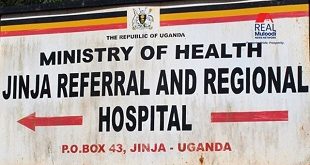
Kampala, Uganda | THE INDEPENDENT | Ugandans in the agriculture sector have so far received a total of 620 billion Shillings under the Agricultural Credit Facility, a fund managed by the Bank of Uganda, according to a report for the period June 2020/2021.
This was an increase by half in the amount lent out by the bank under the fund, from 408.6 billion Shillings registered at the end of June 2020. According to Deputy Governor Michael Atingi-Ego, this was good performance of the facility considering that the country and the export markets were under lockdowns and supply chains disrupted due to the COVID-19 pandemic.
The facility was launched in 2009 to unlock the challenge of access to affordable credit by farmers, as a risk-sharing facility between the government and financial institutions. The main objective was supporting commercialization and modernization of the agricultural sector, which according to the government was constrained by several factors like inadequate infrastructure, volatility of weather patterns and access to finance.
Of the total disbursements, the government contribution amounts to 314.8 billion Shillings, while 305.2 billion Shillings is from the participating financial institutions. It is a joint financing program between the government through the central bank and the participating financial institutions which include commercial banks and microfinance institutions.
The government intervention was not only aimed at building the lending capacity of commercial banks, but to help them share the risk, and enable them to lend at a low-interest rate of 12 per cent per annum, compared to the market rates of more than 17 per cent today.
However, the number and value of applications far exceed the amount released, having increased by 505 to 1,463 applications. The bank says that currently, if all the applications that are in the pipeline were to be cleared, the facility would run out of cash, while the cash so far received by the Central Bank from the Escrow account and the total repayments from the participating financial institutions amounting to 352 billion Shillings, out of which 314.8 billion Shillings has been lent out.
The approved but not yet disbursed applications (outstanding commitments) amount to 11.8 billion Shillings, while the applications that are still in the pipeline are worth 46.5 billion Shillings, meaning BoU needs more money to ensure that the facility is not interrupted. “And if the pipeline applications are to be approved, there will be a funding deficit of 21.12 billion Shillings,” says the report.
BoU calls this performance of the facility ‘impressive’, regarding both the repayment by the participating financial institutions and the borrowers and the demand for the facility by farmers.
“The increasing demand for the Agricultural Credit Facility loans is reflected in the pipeline (loan applications under review) at BoU amounting to 90.14 billion Shillings with the corresponding government contribution of 46.51 billion Shillings,” it says.
Funding totalling 102.8 billion Shillings went towards mechanization constituting 16.6 per cent of total financing. Farm machinery and equipment financed include; tractors and implements, irrigation equipment, feed mills, seed planters, greenhouse facilities among others. There ACF, like most government financing programs, has met challenges of being viewed as meant for or benefiting big commercial farmers.
As a result, most small-scale enterprises tend to stay away from them. However, the BOU gives a different view saying most of the beneficiaries are smallholder farmers.
“The ACF has demonstrated that access to finance by the smallholder farmers and agribusinesses is achievable as this is evidenced by the fact that the highest number of beneficiaries under the scheme are the small and medium enterprises who constitute 60.8 percent of the total number of beneficiaries as of June 30, 2021,” the report says. The loan amounts under this category range between 10 million and 100 million shillings.
These also include the unsecured loans for the micro borrowers under the block allocation arrangement in which funding amounting to 4.92 billion Shillings has so far been extended. The introduction of block allocation in 2018 allowed the lenders to consider extending loans of up to 20 million shillings to farmers with alternative collateral arrangements such as chattel mortgages, cash-flow based financing, character-based loans among others.
This is intended to unlock credit to the micro and smallholder farmers who cannot afford the traditional collateral banks require. Under this, the ACF had extended financing to 314 rural farmers using nontraditional collateral under block allocation.
On-farm activities including cultivation, weeding and harvesting, these have accounted for 28 per cent of the funds, while agro-processing or agro-business enterprises took 26 per cent. Another 9 per cent went towards post-harvest management activities.
Grain trade and agro-processing attract high loan amounts due to the need for high financing requirements by grain traders to be able to mop-up the excess grain on the market, hence stabilizing the prices, as well as the heavy investment in machinery for value addition.
On the other hand, according to the BOU, the on-farm category constitutes the highest number of micro, small and medium enterprises, which comprise the biggest majority of the agricultural sector and are the engine of job creation. These most need the money for activities like farm expansion and improvement, installing valley dams and irrigation equipment, land opening, inputs seeds, seedlings, fertilizers and pesticides.
*****
URN
 The Independent Uganda: You get the Truth we Pay the Price
The Independent Uganda: You get the Truth we Pay the Price


